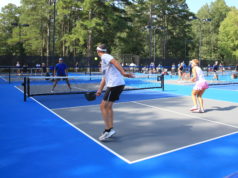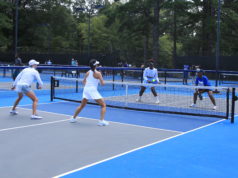By Dr. Ketan B. Patel, DPM, FACFAS
Unfortunately, injuries do happen, making it crucial to be prepared when tennis players hurt their foot or ankle. Here are a few myths to avoid the next time you are rendering first aid or dealing with a sports injury.
‘It can’t be broken because I can move it.’
This is especially false because there are many bones in the foot that are thin, fragile and bear little weight, and as a result still move after a fracture. However painless they may be, they still need to be treated just as any other fracture to avoid more serious complications. For example, small joint fractures that are not properly splinted or immobilized can cause painful misalignments/sequelae in the toe causing painful arthritis or corns, callouses and even ulcerations. Delaying or avoiding treatment like in stress fractures that can be mild in pain and allow for near-normal function can lead to a true fracture that requires surgical care in some instances.
Due to the complex nature of the foot and ankle, there are also numerous ligaments and tendons one must be mindful of. These structures can be just as deceiving and difficult to heal and can cause deformity as well if early care isn’t enacted.
‘There is nothing you can do about a toe fracture anyway.’
One of biggest consequences of not treating or undertreating a toe fracture/injury is delayed healing or non-healing of the fracture due to the fact that toes naturally have poor circulation and as a result tend to be slow-healing areas. Many strategies to control the swelling and pain can be implemented, including immobilization splints, devices bone stimulators and stem cell therapy.
‘It’s probably a bad sprain, so I’ll just wait it out or walk it off.’ or ‘It will go away.’
It is always a good idea to rule out a fracture or injury to a vital structure like a ligament or tendon in a persistent injury. A helpful rule of thumb: If an athlete has continued swelling and pain for more than 24-36 hours after an injury and solid first aid efforts, including rest, ice, elevation, compression have been employed, then that is a cue to have it evaluated.
‘Soaking in warm water helps.’
Warm water after an injury may increase swelling in the early stages of an injury because warmth increases circulation and inflammation to the area, thus increasing pain to the area due to the pressure swelling has on sensitive nerves. Ice not only has a helpful effect on swelling, but it also is a potent anti-inflammatory and numbing can affect painful nerves.
‘Just put an ACE Bandage on it.’
Although comforting from the pressure, an ACE Bandage does not support the ankle or foot after an injury like a cast or splint would. ACE Bandages help with swelling from pressure, but do not help rest or immobilize the injured area due to elastic properties.
‘My shoes caused my bunion.’
It is a myth that shoes cause most of the problems or deformities that our feet develop throughout our lives, including deformities like bunions, hammertoes and corns. If it were true that shoes caused all of these problems, everybody who wore shoes should have the same problems and everyone who went around barefoot would never develop any foot problems. Most non-traumatic foot problems are hereditary. Like other parts of our bodies that we inherit from our parents, we also inherit the bone structure that makes up our feet, as well as the problems that go along with them.
What should you do in the event of injury?
Here are some general tips you should consider when injured in order to keep the problem at bay before being seen by a trained professional. Most athletes look to use the RICE method at first to treat an injury — rest, ice, compression and elevation.
Rest: It is important to have the injury splinted in some fashion to ensure movement or weight does not cause further damage.
Ice: It is extremely important to ice the injured area to relieve some of the inflammatory processes the body puts into play after an injury. This may also help reduce pain.
Compression: Gentle compression is advised after an injury. Apply an ACE Bandage loosely to avoid “strangling” the foot.
Elevation: Elevate the injured limb above waist level to diminish the swelling, inflammation and pain to the injury.
Other helpful tips include:
• In the instance of cuts or scrapes, the wound should be cleansed with hydrogen peroxide solution, kept elevated until the bleeding is brought under control and dressed with clean dressings until it can be seen by a health profession.
• Blisters and burns should be kept clean, dry and dressed with fresh dressings that have antibiotic ointment. The temptation to break blisters should be avoided.
• Foreign objects such as splinters, glass or metal should be sterilely, carefully and professionally removed to ensure they are not pushed in farther or, worse, broken off in the injured area.
Just like anything else in sports, being proactive and seeking help when needed can keep simple conditions and injuries from becoming more serious issues. So, next time, just call a time out and get things straightened out before you hit the courts and get back to your winning ways.
_______
Dr. Ketan Patel, who practices with Ankle & Foot Centers of Georgia, is respected in all phases of surgical and medical management of conditions in the lower extremity. He is a lecturer and educator who has been appointed to numerous leadership positions within the medical community and has been recognized and awarded for his expertise.




